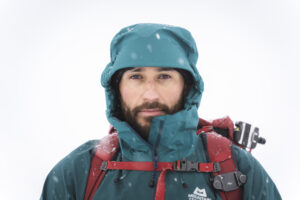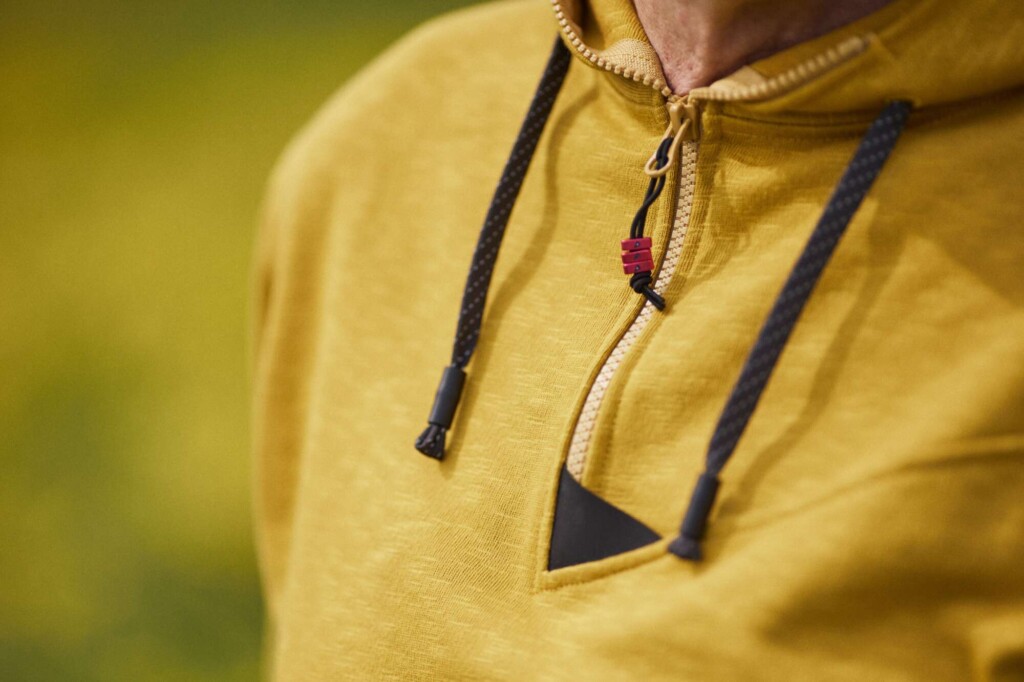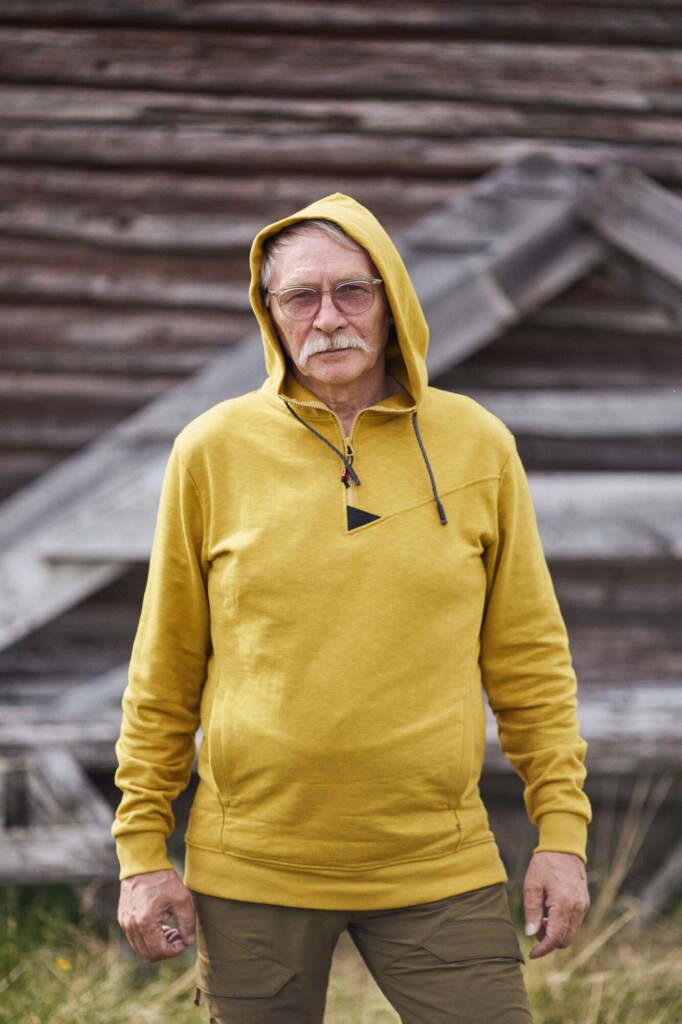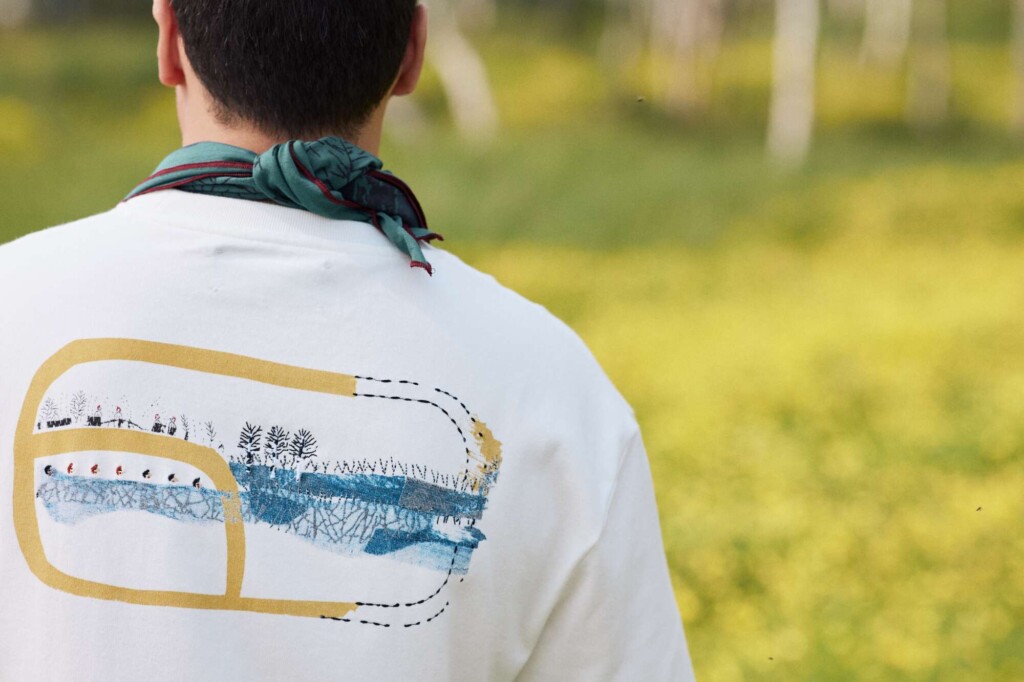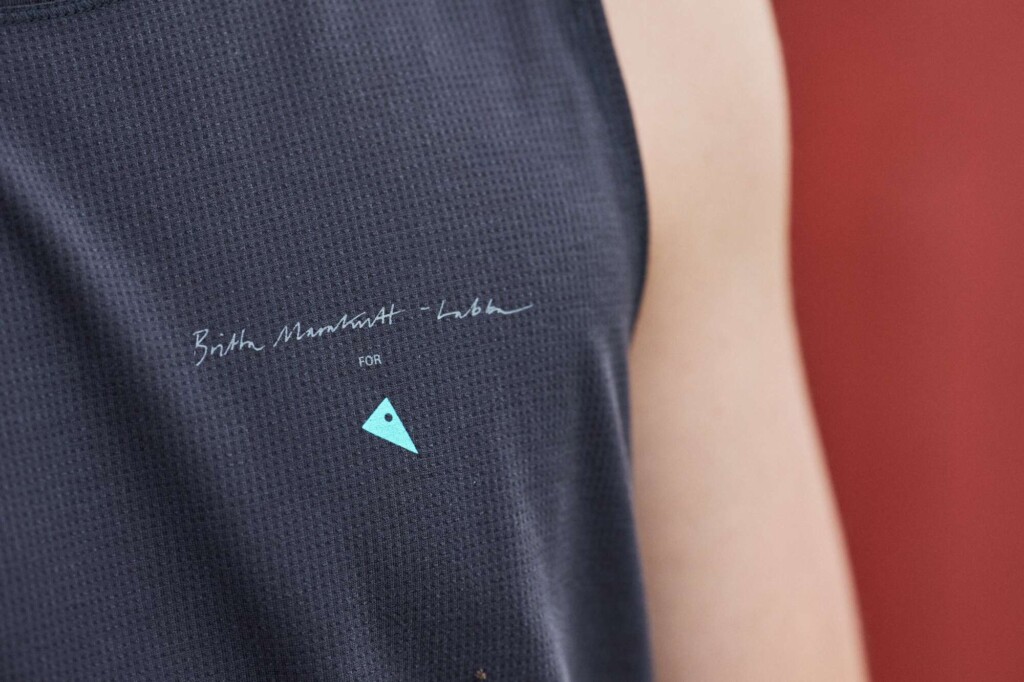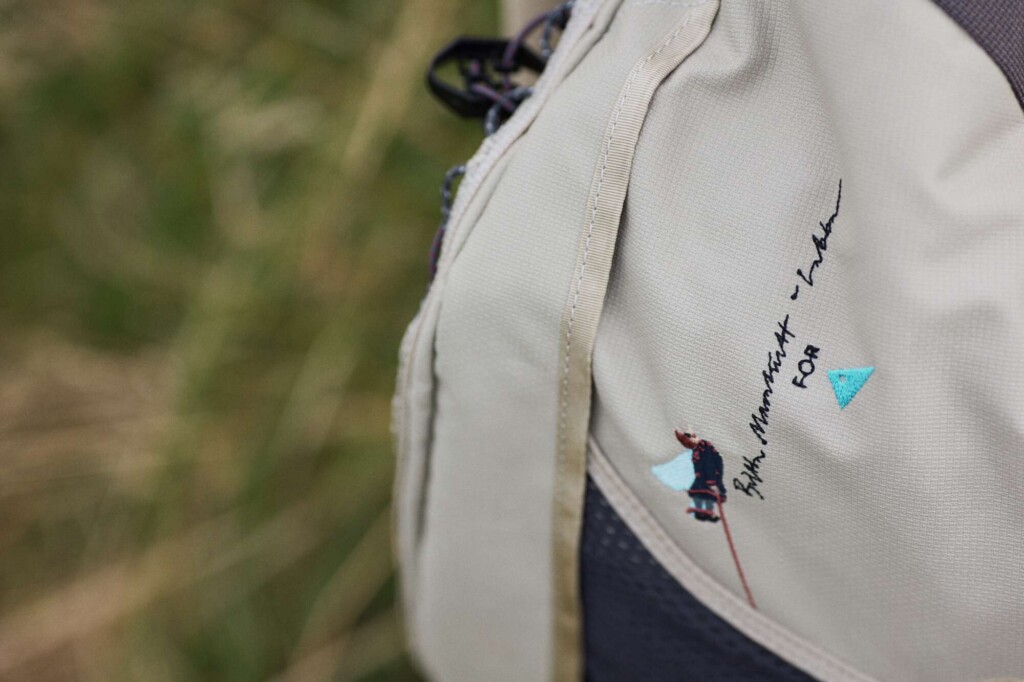This year, Swedish outdoor brand Klättermusen launched their first ever collaboration range, teaming up with renowned embroidery artist Britta Marakatt-Labba. Rooted in craftsmanship and her cultural heritage, Britta’s work guides illustrates Sámi history and landscapes of both the past and present.
BASE Collective member Adam Raja recently travelled to Sweden to sit down with Britta, discussing the collection and the significance of the values and elements it embodies – craftsmanship, heritage, and our environment.
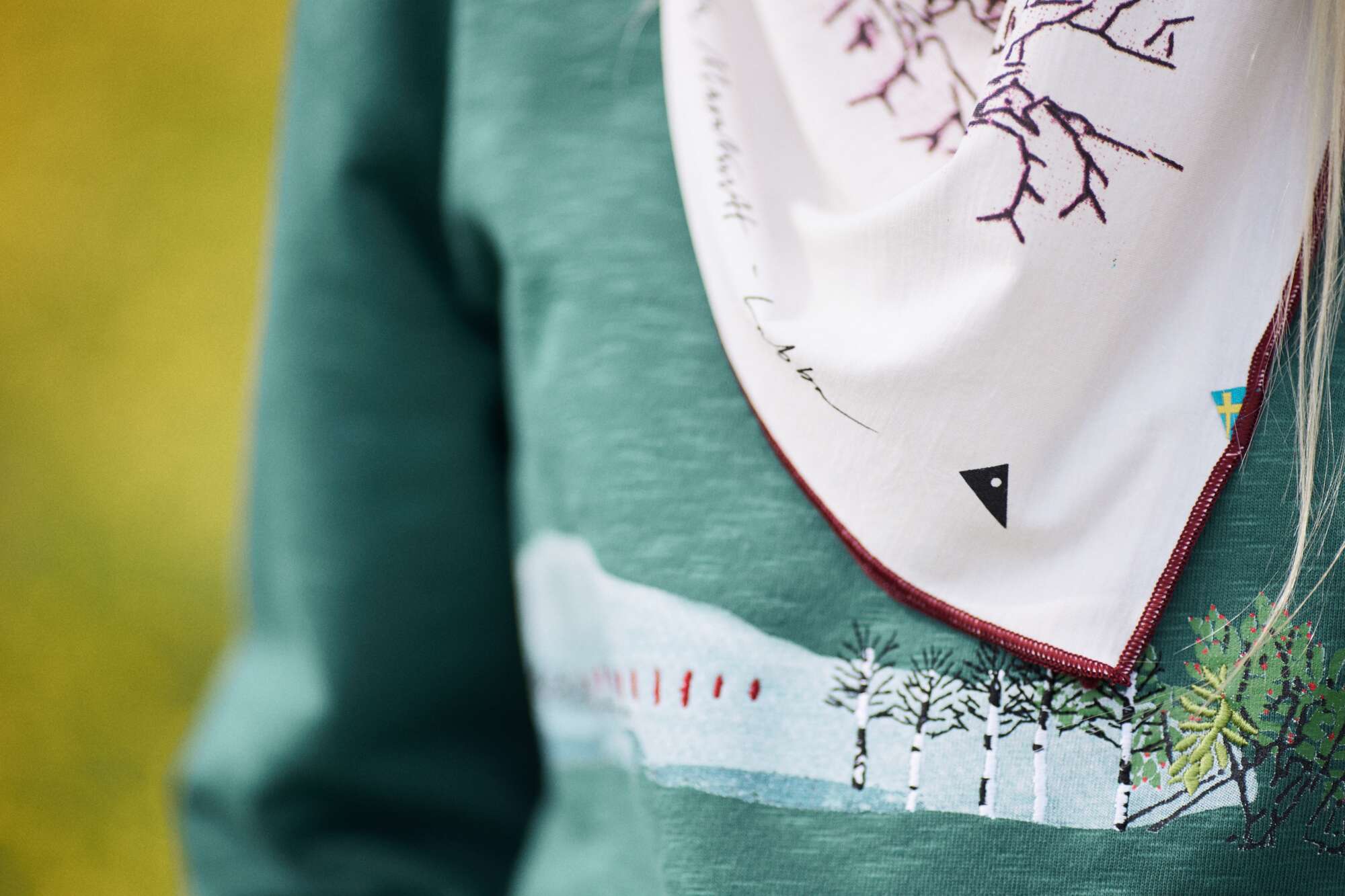
Intricate designs depict various aspects of cultural importance to the Sámi people
There’s no escaping it, brand collaborations are a la mode right now. Pick up your phone and have a scroll, it won’t be long before you see one advertised in your feed. But they’re nothing new. As a lifelong hip-hop fan, I was introduced to the idea in 2003 when 50 Cent partnered with Reebok to release the G-Unit G6 trainer. And as popular as it was (think the Prime energy drink of my generation) it wasn’t revolutionary. The first hip-hop x trainer collaboration goes back to 1987 when adidas partnered with Run DMC.
Two decades later, I’m no longer a preteen, and there are few areas of our modern lives that collaborations haven’t breached. It’s arguably reached a point of absurdity. Footwear brands aren’t just collaborating with rappers – you can pick up a pair of Nike Dunks inspired by your favourite ice cream duo, Ben and Jerry.
Call me a cynic, but having worked in marketing for 10 years, it’s difficult for me to look beyond most collaborations for what they are – a way to increase a brand’s reach by appealing to another brand’s customers. Despite this, even I must admit that among the heaps of seemingly fanatical collaborations, some stand out and make sense – way more than ice cream-inspired trainers.
Klättermusen was keen to do a collaboration based on shared values of craftsmanship, heritage, and devotion to the environment
This is what Swedish mountain equipment brand Klättermusen were aiming for when they teamed up with renowned Sámi textile artist Britta Marakatt-Labba. As a brand that prides itself on creating the best and most sustainable equipment, Klättermusen was keen to do a collaboration based on shared values of craftsmanship, heritage, and devotion to the environment. Britta ticked all of those boxes.
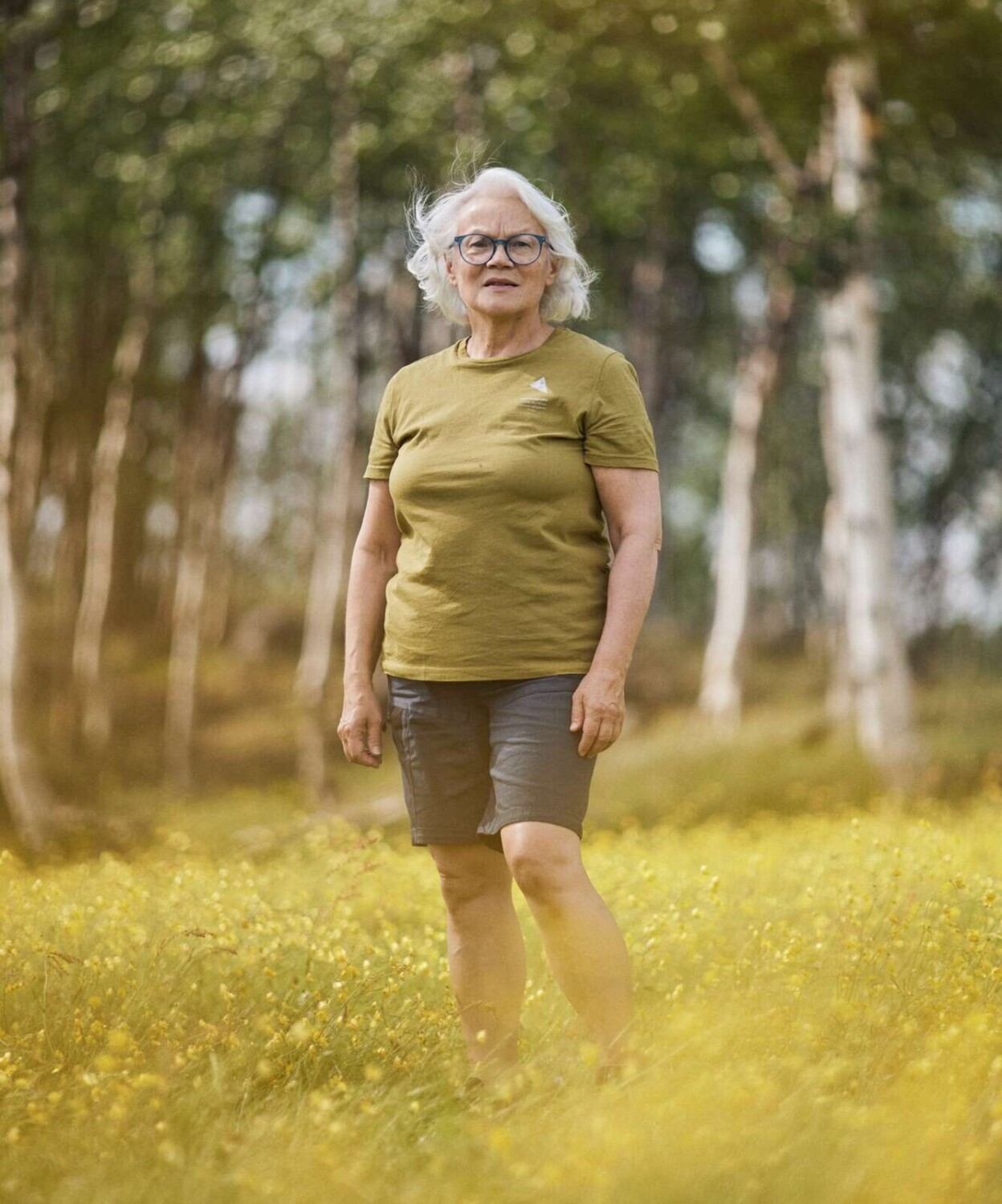
Sámi artist Britta Marakatt-Labba wears one of her own designs
‘I read the email and replied YES immediately,’ Britta laughs. Born into a Sámi reindeer herding family, Britta grew fond of Klättermusen after seeing reindeer herders using the clothing in challenging conditions.’When I was a child, my mother said, you have to be very careful with your clothes, they must last a long time, so I have a respect for the clothing.’
The Sámi are indigenous nomadic people who inhabit large parts of Scandinavia, including Norway, Sweden, Finland, and Russia with a total population across these countries estimated at around 80,000. Sámi culture is one of the oldest in Scandinavia, and is richly steeped in craftwork traditions and language. Culture undeniably influences everything that Britta does – if heritage was a value that Klättermusen were after, they certainly found that with this fascinating Sámi artisan.
‘I was so lucky to be raised by a family who loved to tell stories from our Sámi culture. My mother was very philosophical, and she used Sámi mythologies to teach us important lessons. We learned not to take more than we needed from the environment, and to give thanks. These stories were instilled in me, and in our culture, it all starts with art, so at a very young age, I started to tell stories through my art.’
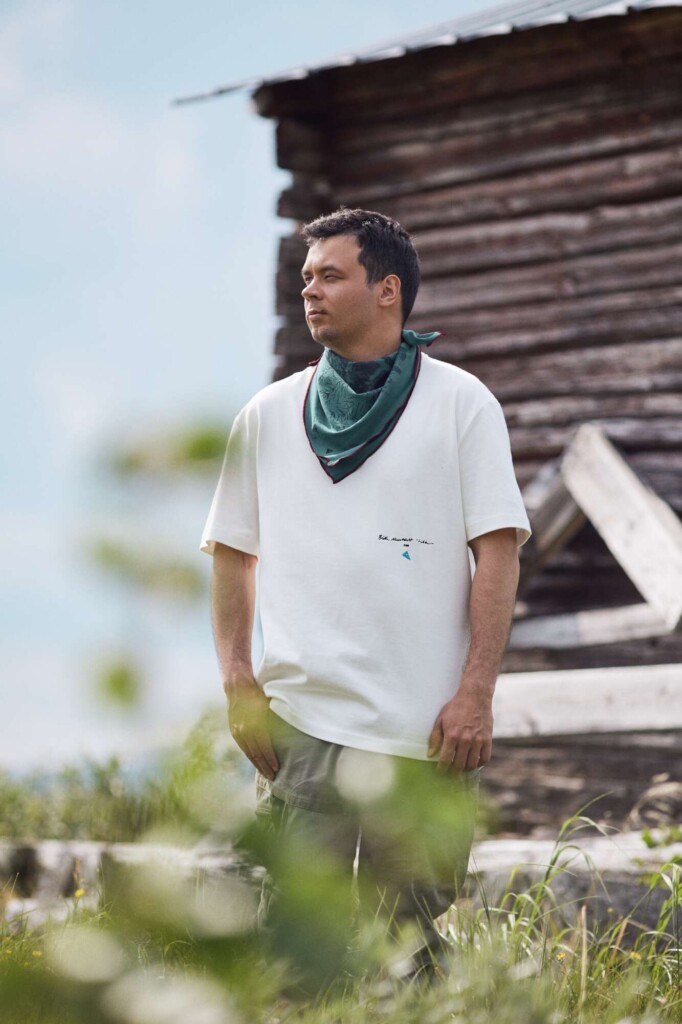
Friends and family of Britta with a connection to Sámi culture modelled the collection
In the summer, Britta would watch visitors making traditional Sámi handicrafts in their teepees and naturally gravitated towards textiles. ‘Cloth was always close to me as a child,’ she says.
In the decades since, Britta Marakatt-Labba has established herself as a renowned artist and founding member of the Máze Group, an art collective that sought to carve out a space for Sámi identity and culture as part of contemporary art. But this success didn’t come without challenge.
‘It was not so easy for one, young Sámi girl to go from the north of Sweden with my background and my culture and just to be there in Gothenburg,’ she explains. ‘Everything was so new for me. It’s the little London, you know? It was a culture shock – a new language, a new environment, and new behaviour.
‘In Sámi culture, we like to make jokes, and I was joking with people and singing all of the time. I met one girl, who said, have you been drinking? They didn’t understand me.’
Despite the feelings of alienation her heritage brought her, it remained a guiding compass in both her life and work.
‘I knew I wanted to make patterns for Klättermusen – the next question was, what shall I do?‘
Britta immediately turned to her Sámi heritage for inspiration, which offered a wealth of source material to tap into and explore. Throughout the range, you’ll find intricate designs which depict various aspects of cultural importance to the Sámi people. A ceremonial drum, forbidden and burned by Christians in the 16th century circles t-shirts and sweatshirts; women wearing horned hats upside-down in defiance of a ban on the headwear populate garments. You’ll see illustrations of plants used for medicine, nutrients, and even sweet treats. It’s apparent from the designs that nature is an exceptionally important part of Sámi culture, and arguably the most important message conveyed is the outcome when nature isn’t treated in the way that Britta’s mum taught her to through mythology.
I’ll admit, the designs are beautiful as they are, and I’d buy one based on the aesthetics alone. But as I chatted to Britta about the meaning of her embroidery, the garments took on a much deeper and more meaningful message than I anticipated.
‘I put these people with shadows and forests because a lot of things are happening in our home now,’ Britta explains. ‘They are taking more and more land from us – big mining companies are digging all of the time in search of new minerals and cutting down a lot of forests.’
Whilst running her finger across one of her garments, she explained the elements of the design.
‘The goddesses in the images are trying to protect the things that we need in our daily lives. You’ll see here that they have the horn-shaped hats in red hats because they are still happy. But some of them have black or blue – blue means sorrow in Sámi culture. They are wearing blue because they are very worried about what is happening.’
big mining companies are digging all of the time in search of new minerals and cutting down a lot of forests
One message was particularly apparent – Britta had a deep concern over the recent, and growing exploitation of the land that her Sámi culture has paid homage to for so many years.
‘So the message is how do we stop this exploitation of nature and our culture. All of these mountains, the animals, and forests. They should be protected somehow.’
This message seems especially important today as we escalating impacts of the climate crisis unfold, and these items feel reflective of the changing narrative of the crisis from conspiratorial to widely accepted.
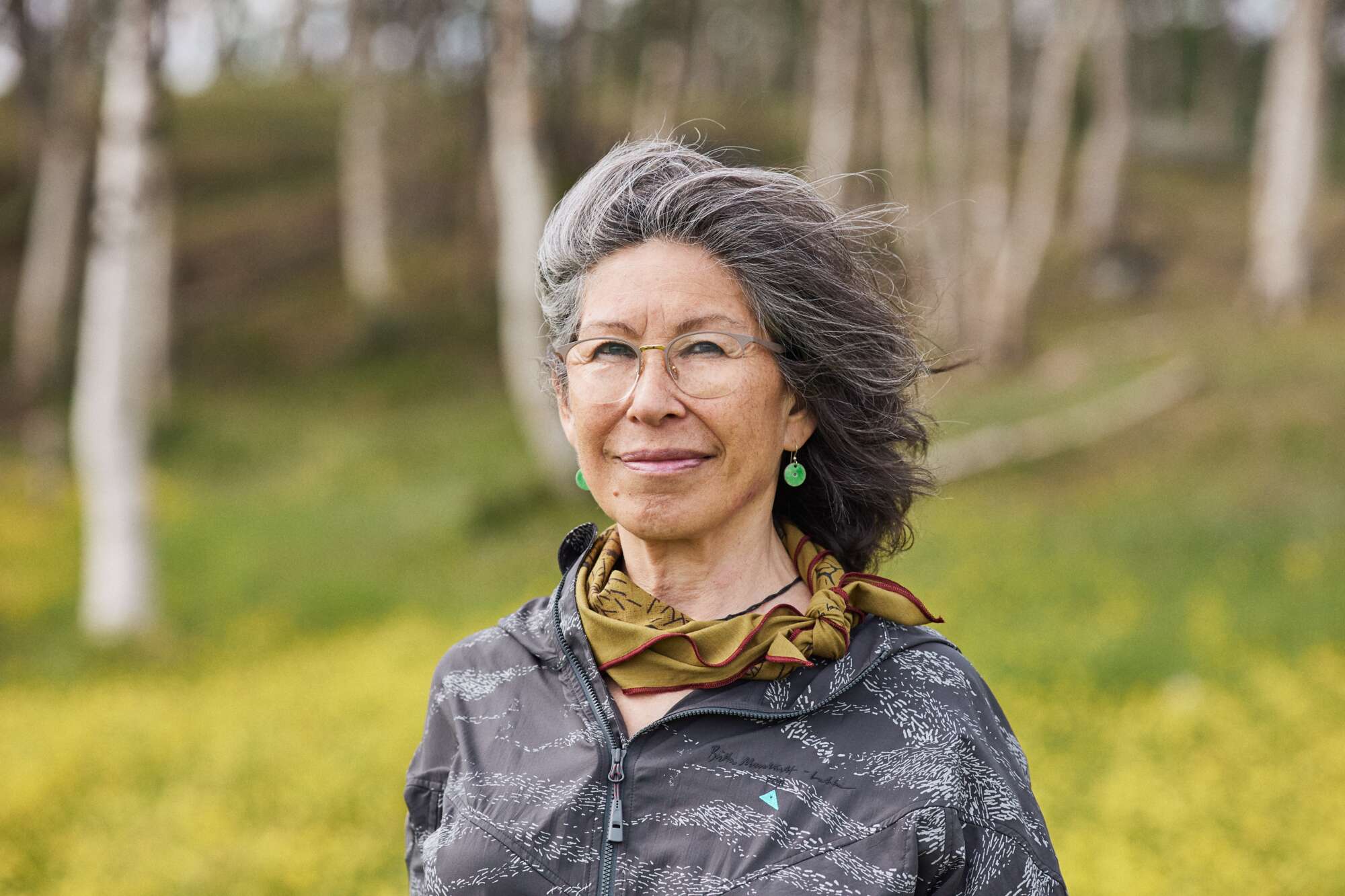
The designs also depict Britta’s deep concern over the recent exploitation of Sámi land
Heritage has always been a source of conflict in my life. As a brown boy, living in a predominantly white area, I spent many years denying my cultural background. So I was intrigued to ask Britta, what made her heritage so important to her.
‘I want to share my culture so people can understand our values. I think the world could benefit from them, and this collaboration is an easier way for lots of people to see my work. Not everyone can go to an exhibition, they can be expensive.’
‘In this way, people can carry this very close to their body. They have my art with them when they are walking up a mountain, climbing, or when they wake up in a tent – they can see this piece of art and I hope can give some guidance.’
In this way, people can carry this very close to their body. They have my art with them when they are walking up a mountain, climbing, or when they wake up in a tent
The Klättermusen x Britta Marakatt-Labba collaboration range is available now via the Klättermusen web store.
Don’t miss a single adventure
Sign up to our free newsletter and get a weekly BASE hit to your inbox
Other posts by this author
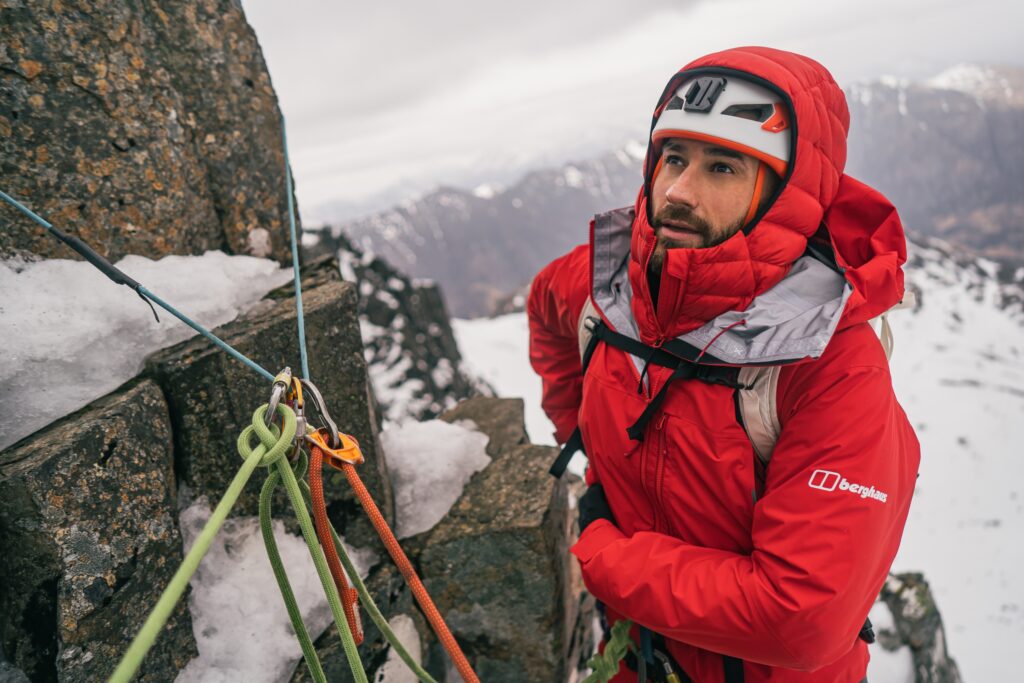
Story • Adam Raja • Jan 19, 2023
Adam Raja: Finding Identity in The Mountains
A personal and emotive journey from the inner-city gangs of Glasgow to the wide-open spaces and summits of Glencoe
